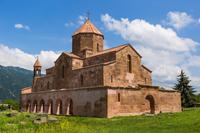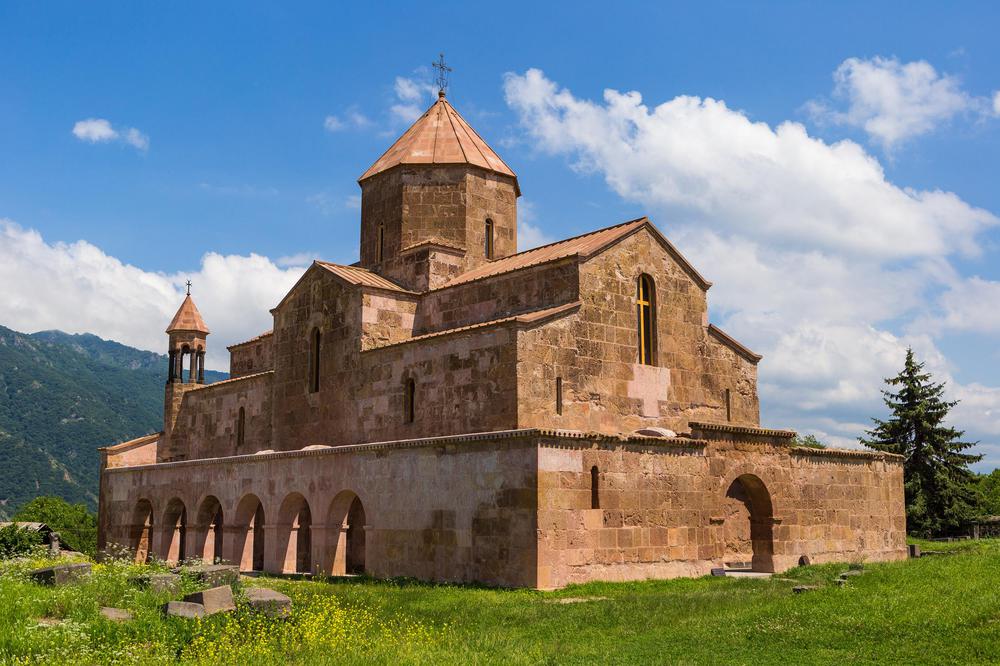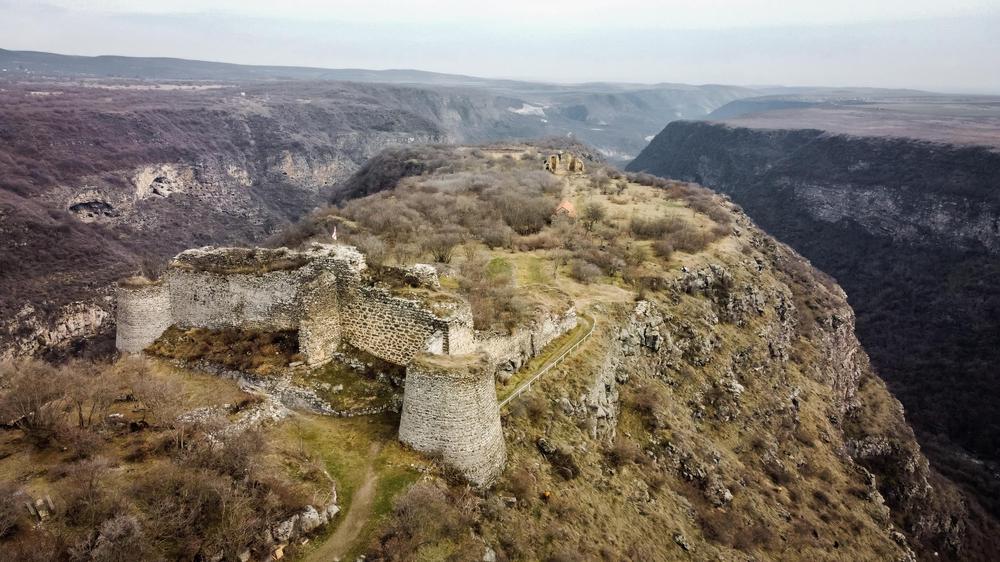Perched on a cliff overlooking the town of Akhtala, the 10th-century Akhtala Monastery, also known as Pghindzavank, stands as an impressive fortress and testament to Armenia's religious and artistic heritage. Surrounded by deep canyons on three sides, the monastic complex and fortress were built during the rule of the Kiurikian dynasty and played a crucial role in safeguarding the northwestern regions of Armenia.
The Akhtala Monastery complex includes the main church dedicated to St. Astvatsatsin (Holy Mother of God), a portico with a chapel-sepulcher, fortress walls, a 13th-century tower and gate, monks' cells, a bathhouse, and remnants of other structures. The site is renowned for its highly artistic frescoes, which adorn the interior walls, partitions, and bearings of the main church.
The original name of the monastery, Pghndzahank, referred to the rich copper deposits found in the area. The modern name, Akhtala, is believed to have Turkic origins, meaning "white glade." During the late 19th century, French archaeologist Jacques de Morgan conducted excavations near Akhtala and discovered 576 stone sepulchers and various cultural items dating back to the 8th century BCE.
The fortress itself was constructed atop Bronze and Iron Age foundations and features walls and towers built of bluish basalt and lime mortar. Its strategic location and natural defenses made it a crucial stronghold during the turbulent history of Armenia.
Today, the Akhtala Monastery remains an important cultural and historical site, attracting visitors interested in Armenia's rich religious and artistic past. Exploring this ancient fortress-monastery offers a unique insight into the nation's history, architectural prowess, and enduring faith.














